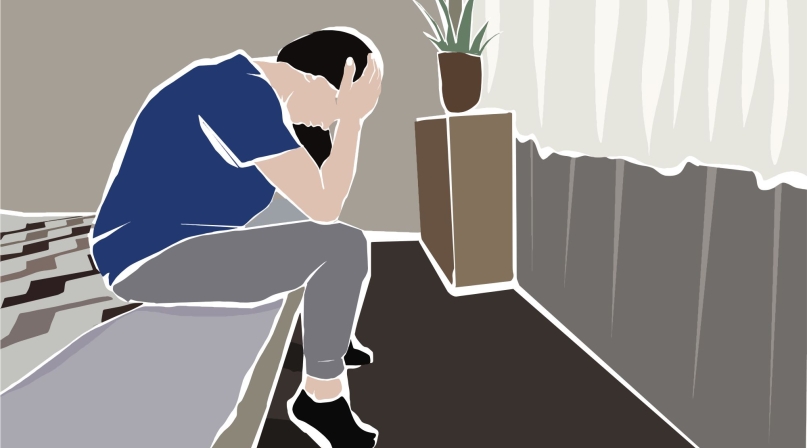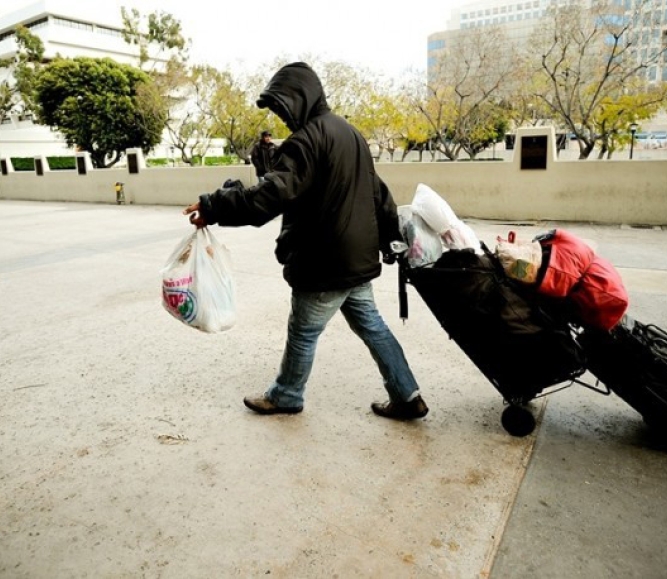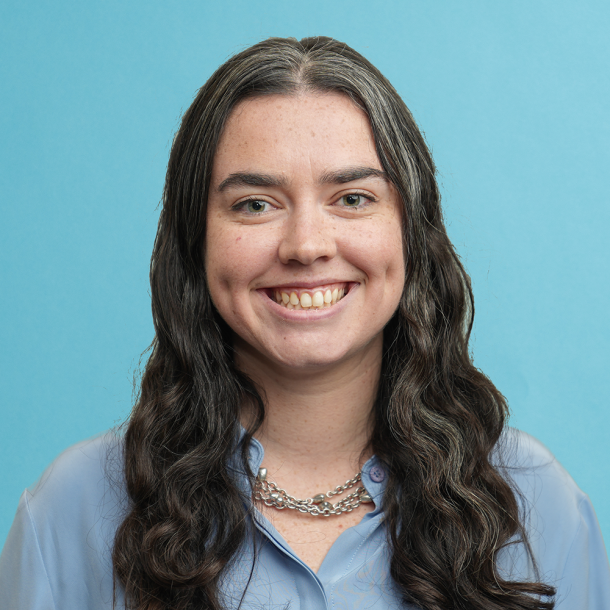L.A. County fends off homelessness with an assist from A.I.

Key Takeaways
Two months ago, Shabree Stewart dreaded leaving her apartment.
Every time she walked out the front door, she was faced with a seemingly never-ending stack of credit card and utility bills and overdue car payments. Then, Stewart received something else in the mail — what she calls a second chance.
In a letter, Los Angeles County’s Department of Health Services notified her that she was eligible for a four-to-six month pilot program.
An artificial intelligence algorithm had deemed Stewart as one of the people in the county most at-risk of homelessness, and now, she was being given the opportunity to participate in Los Angeles County’s Homelessness Prevention program.
The predictive model, created by the California Policy Lab at UCLA, pulls data from six county departments to create a list of the county’s most vulnerable population — people who frequently show up in the county’s criminal justice and hospital systems and who access benefits like food stamps (SNAP benefits).
The Lab also adds to the county’s dataset something called the area deprivation index, which is a tool developed by the University of Wisconsin School of Medicine and Public Health that aggregates publicly available information such as rates of debt and homeownership.
Learn more
The California Policy Lab's report:Predicting and Preventing Homelessness in Los Angeles
The county’s health department uses the list to call and send letters like the one Stewart received, offering them financial assistance and supportive services through its Homelessness Prevention program.
The program has served more than 700 people since 2021, 86% of whom have stayed housed.
The Lab tested the technology’s ability to predict homelessness by using old county data and seeing how many of the people it deemed high-risk ended up becoming homeless; in all, 24% did.
According to Janey Rountree, executive director of the California Policy Lab, the algorithm is 3.5 times better at predicting homelessness than a random guess.
“The computer can analyze a lot more information,” Rountree said.
“It also allows the county to be proactive. They don’t have to wait for these people to call a hotline or try to seek services, and that’s really important because I think it’s reaching people that wouldn’t otherwise call for help.”
Many of the people the program serves, including Stewart, have previously had negative experiences with county systems and services, and may lack the ability to advocate for themselves, which makes the outreach element that much more important, said Dana Vanderford, associate director of homelessness prevention for the Los Angeles County Department of Health Services.
“We often meet our clients right in the middle of a crisis, or with a looming crisis coming their way or immediately after a crisis has occurred,” Vanderford said.
“The timing of it feels really serendipitous to me, but we have the ability to sort of appear out of nowhere and help a client, immediately resolve a crisis and then six months down the road, still have them in their permanent housing.”
When Stewart received an enrollment offer, she was in credit card debt and had a hefty utility bill in the “red notice” she couldn’t afford.
She was worried about having her heat turned off and help came “just at the right time,” she said.
Her case manager, Pete Vela, connected Stewart to the California Alternate Rates for Energy (CARE) program, which helped her pay off the utility bill. She’s been able to get out of credit card debt through the $6,000 she’s receiving over the course of the county program.
“I wouldn’t ever have thought I’d be in ‘no debt,’” Stewart said. “Some of the help I’ve got, I was calculating, I would’ve been paying those bills for years, and this program was able to take that away. It’s unbelievable. I’m at a loss for words; it’s like a dream.”
Individuals can receive either $4,000 or $6,000 over the course of the program, while families start at $6,000 or $8,000, and larger families can receive an additional $1,000 per person. The amount of money each client receives is randomized so that the county can determine whether an additional $2,000 makes enough of a difference in a client’s housing stability to warrant raising the base financial assistance across the board when the pilot program ends, according to Vanderford.
The county will receive results of the effectiveness of the randomized control trial evaluation in 2026 from the California Policy Lab as the American Rescue Plan Act funding expires. Los Angeles County devoted roughly $26 million in ARPA funding toward the homelessness prevention pilot program. In addition to the financial assistance given to clients, the funding has gone toward staffing.
The number of case managers on the team has grown to 20 from four since the program started and the department is creating an outreach team so that case managers can focus solely on serving their clients.
A new program manager (whose focus is on linking supportive services) has also been hired.
The program aims to stabilize a client’s housing, which can sometimes take less conventional forms than rental assistance or bills.
While case managers try to tackle “critical, high-stakes items” like debt and rent first, “nothing is really off the table” with what the funding can go toward, Vanderford said.
“Every day, we pay for something that we’ve never paid for before and client choice is really important to us,” Vanderford said. “We try to guide those conversations, but really believe that clients know best what they need to improve their stability and overall health.”
Stewart experiences depression and anxiety and was struggling with her mental health when she started the program.
She had lost a significant amount of weight and her clothes no longer fit, which made her feel uncomfortable leaving her home, so a portion of her funding went toward an H&M gift card.
“Just to put some jeans on that fit made me feel 200% better,” Stewart said.
“Because I’m telling you, like the clothes I had before I can’t fit in, so just to have some help to feel good about going out in the world in life, to feel better and to want to go to work, it’s amazing.”
Having clothes that fit is a “basic necessity” and is a piece of helping stabilize other areas of Stewart’s life, said Pete Vela, her case manager.
“There are probably other benefits that would be like, ‘What do you mean you want a new wardrobe? We’re not going to give you the money to buy new clothes,’” Vela said. “But we were able to do that just because in our minds, it helps stabilize her housing as well. She got clothes she needed for work, which made her want to go to work more.”
Vela comes up with a “map” with each of his clients when they first meet, where together they identify funding priorities and structure them out over the course of the program.
Having a structure from the start makes the process more efficient, Vela said: “Rather than scrambling, ‘Hey, I have a bill due in two days. Can you help me?’”
“Of course, maps change,” Vela said. “Life situations happen all the time, emergencies happen, you never know.”
One of those “life situations” happened to one of Vela’s clients recently; the client had a falling out with his partner and was left without anywhere to come home to.
The funding covered a night’s stay in a motel and Vela was able to connect him to a Los Angeles affordable shared housing program, called Uncle Dave’s Housing, by the next day.
“So, one day to the other, he’s unhoused,” Vela said. “And we worked hard to find him housing — there were a lot of phone calls and a lot of effort put into that one.”
That’s a testament to what the program can do for people, Vela said. Many of the tens of thousands of people in Los Angeles County who are housing insecure aren’t as lucky.
“Even availability in shelters in Los Angeles County is so slim right now,” Vela said. “There’s almost nothing available.”
Clients and case managers meet depending on a client’s needs, at minimum twice monthly. Each meeting serves as a check-in to see how the client is doing and to assess if changes need to be made to planned costs. Sometimes, a client just needs someone to talk to.
“A lot of clients may have no one to speak to, so when I give them a call, they’re kind of letting out everything that they’ve had running through their minds since the last time I spoke to them,” Vela said. “Whether that’s them just venting about how life’s going or what their day’s going like.
“… A lot of people are going through very similar situations and yet sometimes feel so alone, so being able to be there for them is super rewarding for me.”
Vela tries to spend down the client’s allotted money by the third month and devotes the final month to connecting them to supportive services, including food banks, mental health providers, employment fairs and money management programs that help them create an ongoing budget for themselves.
“I, as a case manager, try to push resources and linkages very hard, just because this budget runs out,” Vela said. “And I’m not going to be there after four months with these clients, so I want to make sure they’re set up for after the program.”
Stewart is set to move into new supportive housing the county has created for people at-risk of losing their housing. People living in the units are provided a voucher, so Stewart will pay a fixed portion of her income (she works as a home healthcare worker for the elderly) toward rent.
The process of getting a voucher for Section 8 Housing in Los Angeles County can take a decade or more.
Previously, subsidized housing with supportive services on-site was largely reserved for people in the county who experience chronic homelessness, but now people who meet the criteria for being at-risk of homelessness have expanded housing options.
“Before the program, I didn’t have anything,” Stewart said. “I had a bunch of worries, I had a bunch of bills; I had no food, clothes that didn’t fit. This program just basically gave me a second chance.”
It’s significantly more expensive for a county to get someone out of homelessness than it is to help keep them housed in the first place.
Los Angeles County doesn’t have an estimate on how much money it could save through its Homelessness Prevention program, but, per person, “it’s in the ballpark of $6,000 versus whatever the tens of thousands of dollars it might otherwise take” to get them out of homelessness, Vanderford said.
“And I think that’s probably a little bit on the conservative end to, on the whole, take somebody who has already lost their housing back in [to housing],” Vanderford said, noting the potential savings by the county. “Whatever the delta is, it’s going to be I think really significant.”
The California Policy Lab sends the county health department its lists of at-risk individuals as they’re requested by the Homeless Prevention Unit, so it’s “not a set cadence,” but in 2023, it sent six different lists, according to Rountree.
The Lab is also developing a model with Los Angeles County’s social services department that would help predict families enrolled in the cash aid program, CalWORKS.
The California Policy Lab has also met with Santa Clara County about the AI model, but the Lab doesn’t see its work as portable, Rountree said.
“It’s really custom to Los Angeles,” Rountree said.
“But I think what is transferable from our work is the kind of relationship we have with the county.”
Collaboration among county agencies and academic researchers with expertise in data and machine-learning techniques is where progress happens, Rountree said.
Utility bill and eviction data are two data sources that Los Angeles County does not have access to, that would be beneficial for other counties to track if they want to adopt a similar AI model, she added.
“You need a ‘back and forth,’” Rountree said.
“Your data science team has expertise in the data, but your social work team has expertise in clients’ needs and their workflows, so building these things together is really where you get stuff that matters.”
Being identified by the California Policy Lab’s predictive model and enrolled in the county’s Homelessness Prevention program has given Stewart a new lease on life.
“Shabree at intake is not the Shabree you heard today,” Vela said.
“She’s doing so much better and she’s so much happier with her life at the moment.”
And it’s not just Stewart. Vela said he’s seen a “crazy transformation” in all of his clients through the program.
“It’s a beautiful thing to be able to talk to someone and slowly but surely see them transform into who they want to be,” he said.
Two months ago, leaving her apartment made Stewart feel depressed.
Now, without the fear of how she’s going to pay her bills or the looming possibility of homelessness, she walks out of her apartment with a smile and sparks up conversations with her neighbors.
“I feel like I’m coming back to life.”
Related News

USDA and HHS release new dietary guidelines
On January 7, U.S. Department of Agriculture Secretary Brooke Rollins and U.S. Department of Health and Human Services Secretary Robert F. Kennedy, Jr. unveiled the new Dietary Guidelines for Americans, 2025–2030.

County Countdown – Dec. 15, 2025
Every other week, NACo's County Countdown reviews top federal policy advocacy items with an eye towards counties and the intergovernmental partnership.
County News
Ending homelessness takes slow and steady progress

